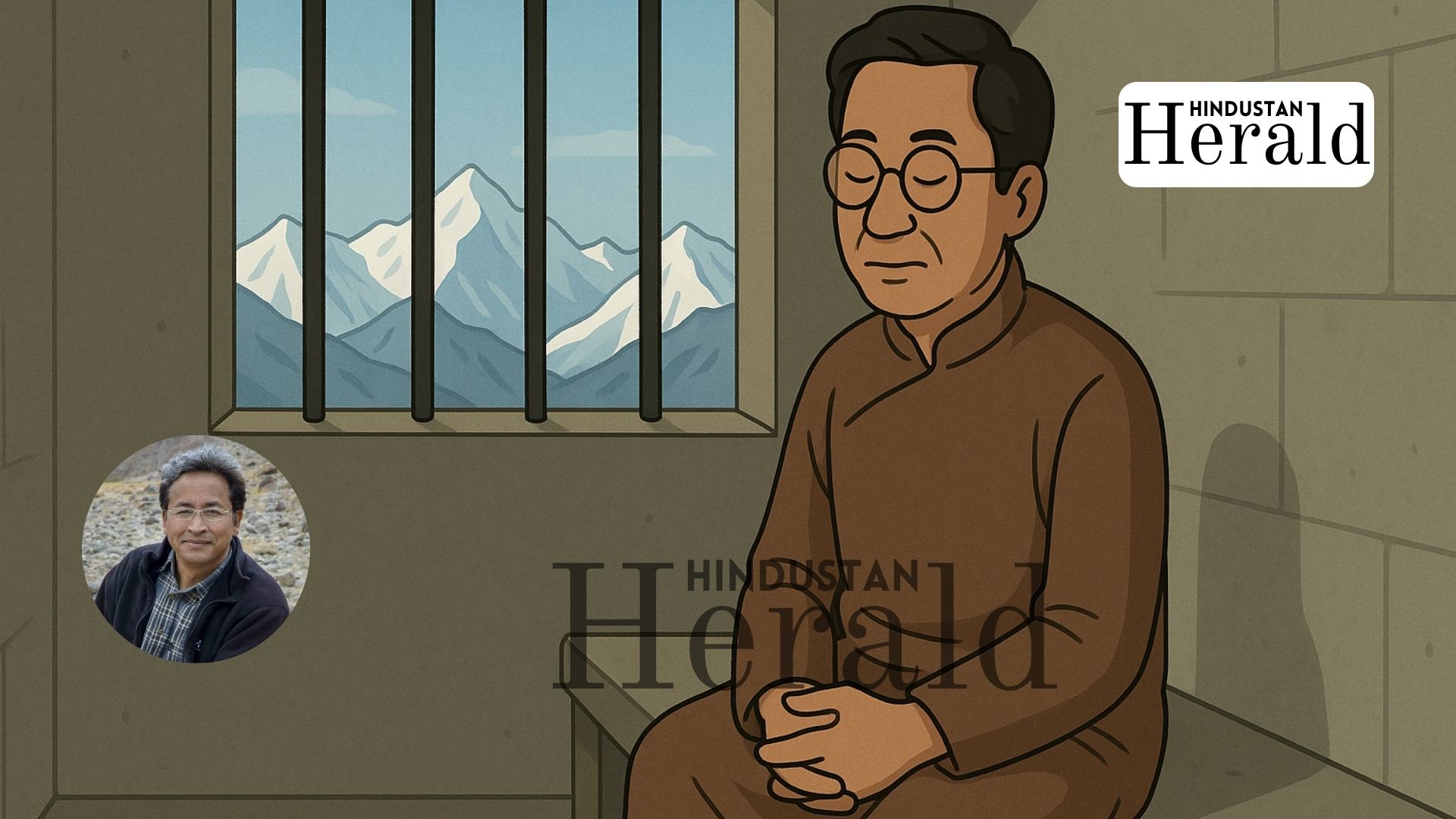New Delhi, October 19: The air around Ladakh’s political storm hasn’t settled. A month has passed since Sonam Wangchuk, the engineer-turned-activist once celebrated for turning mountain water into glaciers, was detained under the National Security Act. And yet, every few days, a new crack opens in court, on the streets, or in the uneasy silence of the Union Territory he calls home.
A Wife, a Petition, and a Flicker of Relief
Inside Court No. 2 this week, Gitanjali J. Angmo sat quietly behind her lawyers, clutching a thin folder of notes. When the judges agreed to let her amend the plea against her husband’s detention, she exhaled for the first time in hours. It wasn’t victory, just permission, but in a system that moves in inches, permission matters.
The Supreme Court will take up the case again on October 29, after the government’s response is folded into the record. For now, Angmo can share Wangchuk’s handwritten notes with him. That simple act of words crossing prison walls has become the couple’s line of hope.
He’s still locked up in Jodhpur Central Jail, a thousand kilometres from Leh, where the mountains have already started to frost. The jail superintendent told the court that Wangchuk isn’t in solitary confinement and that his health is “normal.” Friends say they don’t entirely believe official adjectives anymore.
Administration Doubles Down
The Ladakh administration is standing its ground. It insists everything was done “by the book”: the notice served, the reasons explained, the family informed. Its affidavit before the Supreme Court describes Wangchuk as a man who “indulged in activities prejudicial to the security of the state and public order.”
Behind that legal phrasing sits a more political fear. On September 24, during a protest Wangchuk helped mobilise for Ladakh’s statehood and Sixth Schedule status, four people died and close to a hundred were injured. The administration says those deaths are proof the movement slipped beyond control. His supporters say the opposite that the government panicked because people finally found their voice.
The decision to move him to Rajasthan, officials claim, was to prevent further unrest in Leh. In Ladakh’s markets, that explanation has drawn snorts of disbelief. “You can’t take our leader away and then tell us it’s for peace,” one shopkeeper told Herald over a crackling phone line.
Voices Rising Beyond the Mountains
The protests haven’t stopped at Ladakh’s borders. In Dehradun, local activists are preparing a large-scale march on October 26, calling for Wangchuk’s release. In Kolhapur and Sambhajinagar, student groups hit the streets with slogans and hand-painted banners. Even in Jaipur, Kashmiri students gathered under campus trees, holding up placards that read An environmentalist is not a terrorist.
The movement’s tone remains largely peaceful but unmistakably angry. Many point to the Ministry of Home Affairs canceling the FCRA licence of Wangchuk’s NGO, SECMOL, just weeks after his arrest. The government said there were financial irregularities. His colleagues call it retribution, another way to choke Ladakh’s civil society.
The Shadow of the NSA
The National Security Act has long been a blunt instrument in India’s legal arsenal, a law designed for extraordinary threats, now deployed against an engineer who teaches sustainable farming. Under the NSA, a person can be held for months without a formal charge, their right to see evidence curtailed if the state claims “public interest.”
“It’s preventive justice, which is really no justice at all,” said a constitutional lawyer tracking the case. But in border zones like Ladakh, security is often the last word in any argument.
Officials quietly admit that what rattles Delhi is not just Wangchuk’s rhetoric but his reach. He has the rare ability to translate ecological grief into civic energy, turning melting glaciers and land rights into symbols of identity. The state fears that energy can spill faster than it can be contained.
Waiting for the Court, and for Calm
Everything now turns to October 29. The Supreme Court could demand the administration justify why Wangchuk’s activism qualifies as a national-security threat. Or it could defer, as courts often do, to the government’s judgment.
Either way, the clock ticks differently in Jodhpur. His students write letters they can’t be sure he’ll see. In Leh’s monasteries, butter lamps flicker every evening for his safety. Out on the streets, the posters of his face, thin bespectacled, half-smiling, have begun to fade under the sun.
In Ladakh’s bazaars, conversations have turned cautious. Shopkeepers lower their voices when his name comes up. Yet, there’s also pride that their teacher has managed to make Delhi listen, even if from a cell.
The Larger Picture
This is about more than one arrest. It’s about what kind of space remains in India for peaceful dissent, especially in regions where the mountains keep secrets better than the state ever could. Ladakh’s demand for constitutional safeguards under the Sixth Schedule was born of a simple desire: to control its own resources and protect its fragile ecology. That conversation has now been pushed into a courtroom and a jail cell.
Still, people are watching journalists, lawyers, students, monks. Wangchuk once said that change in the Himalayas “comes like snow quietly, then all at once.” Whether that snow is still falling, or has been frozen by fear, will become clear in the weeks ahead.
For now, Ladakh waits, half in faith, half in fury.
Stay ahead with Hindustan Herald — bringing you trusted news, sharp analysis, and stories that matter across Politics, Business, Technology, Sports, Entertainment, Lifestyle, and more.
Connect with us on Facebook, Instagram, X (Twitter), LinkedIn, YouTube, and join our Telegram community @hindustanherald for real-time updates.
Covers Indian politics, governance, and policy developments with over a decade of experience in political reporting.






